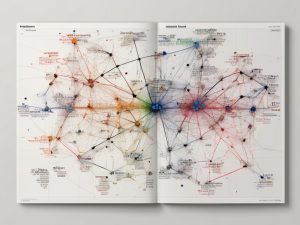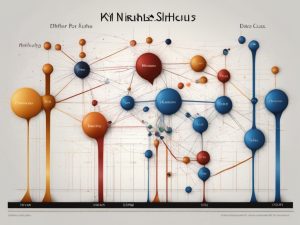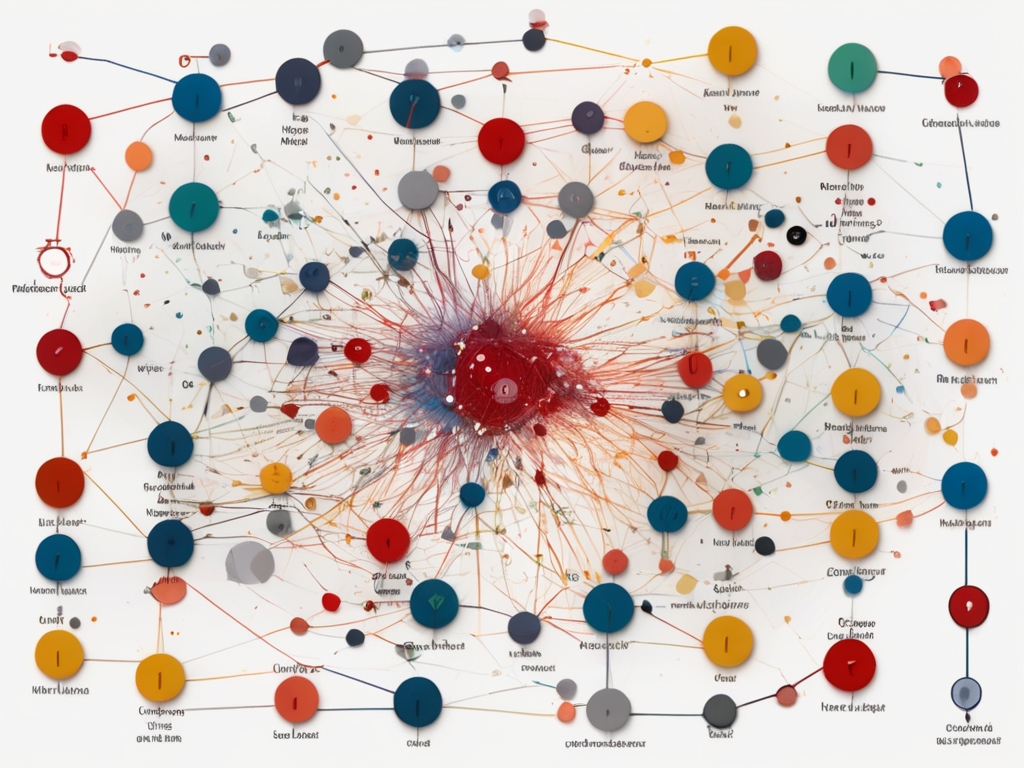
Over recent years, the K-Nearest Neighbors (KNN) algorithm has emerged as a powerful tool in the field of machine learning. Many data scientists and researchers have turned to KNN for its ability to enhance data point classification accuracy with its simple yet effective methodology. By leveraging proximity to neighboring data points, KNN can make informed predictions and classifications. In this blog post, we will probe into the intricacies of the KNN algorithm and explore how it can improve accuracy when classifying data points.
Understanding K-Nearest Neighbors
Your Understanding K-Nearest Neighbors chapter explores into the inner workings of this popular machine learning algorithm. Through a series of detailed explanations and examples, readers will gain a comprehensive understanding of how K-Nearest Neighbors operates and its significance in classification tasks.
- Explain the concept of K-Nearest Neighbors.
- Describe the importance of choosing the right value for k.
- Provide examples of how the algorithm works in practice.
- Discuss the impact of distance metrics on the algorithm's performance.
Algorithm Fundamentals
With the core concept of K-Nearest Neighbors revolving around classifying data points based on the classes of their neighboring points, the algorithm vitally assigns a class to a data point based on the majority class among its k-nearest neighbors. By utilizing distance metrics such as Euclidean or Manhattan distance, the algorithm can effectively label data points according to their proximity to existing data points of known classes.
- Explain the basics of the K-Nearest Neighbors algorithm.
- Discuss the role of distance metrics in determining proximity.
- Provide examples of how the algorithm classifies data points.
- Explore the impact of different k values on classification results.
Determining the “K” Value
Understanding the significance of the “k” value in K-Nearest Neighbors is crucial, as it directly influences the algorithm’s performance. Selecting an optimal k value is a balancing act between the risk of overfitting with a low k and underfitting with a high k. By fine-tuning this parameter through techniques like cross-validation, data scientists can optimize the algorithm’s classification accuracy.
- Explain the importance of selecting the right k value.
- Discuss the trade-offs between underfitting and overfitting.
- Provide guidance on choosing an optimal k value through cross-validation.
- Explore the impact of different k values on the algorithm's accuracy.
Understanding the determination of the “k” value in K-Nearest Neighbors is pivotal for achieving accurate classification outcomes. A well-chosen k value can enhance the algorithm’s ability to discern patterns in data effectively. It’s crucial to strike a balance where the model isn’t too biased towards neighboring data points or too generalized to overlook critical nuances in the dataset.
Enhancements in Classification Accuracy
 It is vital to explore the various enhancements that can boost the classification accuracy of the K-Nearest Neighbors (K-NN) algorithm. Below we investigate into the effectiveness of K-NN in various data scenarios, its comparison with other classification algorithms, and additional strategies that can further enhance its performance.
It is vital to explore the various enhancements that can boost the classification accuracy of the K-Nearest Neighbors (K-NN) algorithm. Below we investigate into the effectiveness of K-NN in various data scenarios, its comparison with other classification algorithms, and additional strategies that can further enhance its performance.
- Explore ways to optimize K-NN parameters for improved accuracy
- Consider feature scaling and dimensionality reduction techniques
- Investigate ensemble methods to leverage the strengths of multiple K-NN models
- Evaluate the impact of distance metrics on classification performance
Effectiveness of K-NN in Various Data Scenarios
Effectiveness of K-NN in various data scenarios is crucial for understanding its adaptability and performance across different datasets. By testing K-NN in diverse data scenarios ranging from low-dimensional to high-dimensional data, imbalanced datasets, and noisy data, we can gauge its robustness and its ability to generalize well.
- Evaluate K-NN performance in low-dimensional and high-dimensional datasets
- Test K-NN on imbalanced datasets to assess its handling of skewed class distributions
- Assess K-NN's resilience to noise in the data
- Analyze the impact of varying dataset sizes on K-NN classification accuracy
Comparison with Other Classification Algorithms
Comparing K-NN with other classification algorithms can provide valuable insights into its strengths and weaknesses relative to popular machine learning techniques. By contrasting K-NN with algorithms like Support Vector Machines (SVM), Decision Trees, and Random Forest, we can better understand when to prefer K-NN over other methods and vice versa.
- Compare K-NN with SVM in terms of classification accuracy and computational complexity
- Evaluate decision tree-based algorithms against K-NN for different types of datasets
- Analyze the performance of K-NN versus ensemble methods like Random Forest
- Assess the scalability of K-NN compared to deep learning algorithms like neural networks
Enhancements
 In comparing K-NN with other classification algorithms, it’s important to consider the specific characteristics of each algorithm. While K-NN excels in certain scenarios due to its simplicity and local representation of data, algorithms like SVM offer better generalization capabilities in high-dimensional spaces. Understanding the trade-offs between these algorithms is crucial for selecting the most suitable method for a given classification task.
In comparing K-NN with other classification algorithms, it’s important to consider the specific characteristics of each algorithm. While K-NN excels in certain scenarios due to its simplicity and local representation of data, algorithms like SVM offer better generalization capabilities in high-dimensional spaces. Understanding the trade-offs between these algorithms is crucial for selecting the most suitable method for a given classification task.
- Explore the trade-offs between K-NN and SVM regarding accuracy and computational efficiency
- Contrast the interpretability of decision trees with the instance-based learning of K-NN
- Investigate the benefit of ensemble methods in improving classification accuracy compared to standalone algorithms
- Consider the flexibility of deep learning algorithms in capturing complex patterns versus the simplicity of K-NN
Another
When comparing K-NN with other algorithms, it’s vital to highlight that K-NN’s simplicity can be both a strength and a limitation. While it is easy to implement and interpret, it may struggle with large datasets or high-dimensional spaces due to its computational inefficiency. However, its instance-based learning approach can be advantageous in scenarios where the decision boundary is non-linear or the data distribution is complex. By understanding these nuances, one can make informed decisions on when to leverage the K-NN algorithm for optimal classification results.
Limitations and Challenges
Once again, while the K-Nearest Neighbors (K-NN) algorithm is a powerful tool for classification tasks, it also comes with its own set of limitations and challenges. Understanding these constraints is crucial for effectively implementing K-NN in real-world scenarios.
1. How does the K-Nearest Neighbors algorithm handle imbalanced datasets?
2. What impact does feature scaling have on K-NN performance?
3. Are there any strategies to mitigate the curse of dimensionality in K-NN?
4. Can K-NN handle non-linear decision boundaries effectively?
5. What are the implications of using K-NN in high-dimensional spaces?
Scalability and Efficiency Issues
For a data scientist or machine learning practitioner, scalability and efficiency are critical factors to consider when implementing algorithms like K-NN. As the size of the dataset grows, the algorithm’s performance can significantly degrade, especially in terms of computational resources and time complexity.
1. How does K-NN handle large datasets efficiently?
2. What are the limitations of computational resources when using K-NN?
3. Are there any ways to improve the efficiency of the K-NN algorithm?
4. What impact does the number of neighbors have on the algorithm's efficiency?
5. How does the choice of distance metric affect the scalability of K-NN?
Impact of Data Quality and Dimensionality
For practitioners working with the K-Nearest Neighbors algorithm, the quality of the data and the dimensionality of the feature space can have a significant impact on the algorithm’s performance. Noisy or irrelevant features can lead to inaccuracies in the classification process, while high-dimensional spaces can exacerbate the curse of dimensionality, affecting the algorithm’s efficiency and effectiveness.
1. How does data quality affect the performance of K-NN?
2. What are the implications of high dimensionality on K-NN classification?
3. Can feature reduction techniques improve K-NN performance in high-dimensional spaces?
4. What role does data preprocessing play in enhancing K-NN accuracy?
5. How does data normalization impact the effectiveness of K-NN?
Quality data is paramount in ensuring the accuracy and reliability of the K-Nearest Neighbors algorithm. Noisy or irrelevant data can introduce bias and lead to erroneous classification outcomes. Dimensionality, on the other hand, can pose a challenge as the curse of dimensionality can result in sparsity of data points, diminishing the algorithm’s ability to find close neighbors accurately. However, proper data preprocessing techniques, feature selection, and dimensionality reduction methods can help mitigate these issues, ultimately enhancing the overall performance of K-NN.
Optimizing K-NN Performance
After exploring the fundamentals of the K-Nearest Neighbors (K-NN) algorithm and its impact on data point classification accuracy, it’s imperative to probe into optimizing its performance. Enhancing the accuracy and efficiency of K-NN involves employing various techniques and strategies to fine-tune the algorithm for better results.
Techniques to Improve Accuracy
- How to improve K-NN classification accuracy?
- Techniques for optimizing K-NN algorithm performance
- Strategies to enhance K-NN accuracy
One effective way to improve the accuracy of the K-NN algorithm is by adjusting the value of K. Fine-tuning the K value can significantly impact the algorithm’s performance. Additionally, considering different distance metrics, such as Euclidean, Manhattan, or Minkowski distances, can also improve accuracy levels. Implementing feature scaling techniques like normalization or standardization can further enhance K-NN’s accuracy by ensuring all features contribute equally to the distance computation.
Case for Data Preprocessing and Feature Selection
- Importance of data preprocessing in enhancing K-NN accuracy
- The role of feature selection in improving K-NN performance
- How does data preprocessing impact K-NN algorithm accuracy?
Data preprocessing and feature selection play a crucial role in optimizing K-NN performance. Preprocessing steps such as handling missing values, encoding categorical data, and removing outliers can help clean the data and make it more suitable for the K-NN algorithm. Feature selection techniques like Principal Component Analysis (PCA) or Recursive Feature Elimination (RFE) can help reduce the dimensionality of the dataset, focusing on the most relevant features and improving the algorithm’s accuracy.
Data preprocessing is a critical step in preparing the dataset for machine learning algorithms like K-NN. It involves cleaning the data, handling missing values, normalizing or standardizing features, and encoding categorical variables. Preprocessing ensures that the data is in a suitable format for the algorithm to perform effectively. Feature selection, on the other hand, involves choosing the most relevant features that contribute most to the prediction task while eliminating irrelevant or redundant ones. This process helps in reducing the dimensionality of the dataset and can significantly improve the performance of the K-NN algorithm.
Preprocessing the data can have a significant impact on the accuracy and efficiency of the K-NN algorithm. Removing outliers and handling missing values can ensure the algorithm is working with clean and relevant data. Feature selection techniques help in focusing on the most important features, reducing noise, and improving the overall performance of the algorithm.
To wrap up
Ultimately, it can be concluded that the K-Nearest Neighbors (KNN) algorithm can enhance data point classification accuracy when used effectively. By considering the proximity of data points in feature space and assigning labels based on the majority vote of its nearest neighbors, KNN can be a powerful tool in classification tasks. However, the performance of KNN depends heavily on the choice of the number of neighbors (k) and the distance metric used. It is important to tune these parameters carefully to achieve optimal results. While KNN may not always be the most efficient algorithm for large datasets or high-dimensional data, it can still be a valuable addition to a data scientist’s toolbox for various classification problems.
FAQ
Q: What is the K-Nearest Neighbors (KNN) algorithm?
A: The K-Nearest Neighbors (KNN) algorithm is a simple, instance-based learning algorithm used for classification and regression tasks in machine learning. It classifies data points based on the majority vote of their nearest neighbors.
Q: How does the KNN algorithm work?
A: The KNN algorithm works by calculating the distance between an unclassified data point and all other data points in the training set. It then selects the K nearest neighbors based on this distance measure and assigns the majority class label to the unclassified data point.
Q: Does the KNN algorithm enhance data point classification accuracy?
A: The KNN algorithm can enhance data point classification accuracy in certain scenarios, particularly when the data is well-structured and there are clear boundaries between classes. However, its performance may degrade when dealing with large datasets or noisy data.
Q: What are the key factors to consider when using the KNN algorithm?
A: When using the KNN algorithm, it is important to consider the value of K, the distance metric used, the data normalization techniques applied, and the dimensionality of the feature space. These factors can significantly impact the algorithm’s performance.
Q: How can the accuracy of the KNN algorithm be improved?
A: The accuracy of the KNN algorithm can be improved by selecting an optimal value for K through cross-validation, preprocessing the data to reduce noise and normalize features, and using dimensionality reduction techniques to handle high-dimensional data effectively.

Leave a Reply